Great Living Chola Temples
The temples at Thanjavur (Brahatheeswara Temple), the Temple of Gangaikonda Cholesvaram and the Airavatesvara Temple at Darasuram are designated as Great Living Chola Temples. UNESCO selected the Brihadisvara Temple as a World Heritage Site in the year 1987; the Temple of Gangaikonda cholapuram and the Airavatesvara Temple at Darasuram had been included as extensions to the Great Living Chola Temples World Heritage Site in 2004. These Great Temples had been built during the Chola rule in South India.These temples demonstrate the tremendous power, wealth, imperial domain, and religious commitment of the Chola Dynasity in the cities of Thanjavur and Gangaikonda Cholapuram.
Airateswara Temple
Airateswara Temple is a Hindu temple situated in Darasuram near Kumbakonam in Tamil Nadu. This temple was built by Rajaraja Chola II in the 12th century CE. It is a "UNESCO World Heritage Site" referred as the "Great Living Chola Temple".
This holy place is a Saivaite Temple dedicated to Lord Shiva. Shiva is here known in the name of Airavateshwara, for the reason that he was worshipped at this temple by "Airavata", (the white elephant of the king of the gods, Indra).
Once upon a time, due to curse from Saint Durvasa the white elephant Airavata suffered from its color change. But it had its colors restored by bathing in the temples sacred tank. This myth is honored by an image of elephant Airavata with Lord Indra seated in an inner shrine. The temple and the leading divine being derive its name from this event.
This holy place is a Saivaite Temple dedicated to Lord Shiva. Shiva is here known in the name of Airavateshwara, for the reason that he was worshipped at this temple by "Airavata", (the white elephant of the king of the gods, Indra).
Once upon a time, due to curse from Saint Durvasa the white elephant Airavata suffered from its color change. But it had its colors restored by bathing in the temples sacred tank. This myth is honored by an image of elephant Airavata with Lord Indra seated in an inner shrine. The temple and the leading divine being derive its name from this event.
Horse drawn chariot
Gangaikonda Cholapuram
Gangaikonda Cholapuram was established as the capital of the Cholas by Rajendra Chola I, the son and successor of Great Rajaraja Chola, Rajendra Chola-I (1012-1044 A.D) constructed this temple after his great victorious march to river Ganges on Northern India. The city was founded by him to celebrate his victory over the Ganga dynasty. As the Headquarters of the Cholas from about 1025 C.E. for about 250 years, the city controlled the affairs of total south India, from the river Tungabhadra in the north to Sri Lanka in the south. The great temple of Lord Siva here is next only to the Big temple at Thanjavur in its monumental nature and surpasses it in sculptural quality. Ascertain from the available literature and the remains we may conclude that it was a large city, delicately planned and laid in accordance with the architectural discourses to suit the needs of a capital.
Thanjavur is a key center of Tamil Nadu art and architecture. All of the Great Living Chola Temples, UNESCO World Heritage Monuments are located in an around Thanjavur. The leading among the Great Living Chola temples, the Brihadeeswara Temple, is to be found in the center of the city. The Big Temple or Brihadeeswarar Temple also known asRajarajeswaram is the world's first complete granite temple structure and a dazzling example of the top heights achieved by Chola kingdom in temple architecture. It is an acknowledgment and a reflection of the power of its benefactor RajaRaja Chola I. He named this temple as Rajarajesvaram and the deity Lord Shiva in Linga form as Peruvudaiyar, the temple is also called in the deity's name as Peruvudaiyarkovil (in Tamil). From the epigraphical proof it is known that Rajaraja-I started building this temple on his 19th year and finished on 275th day of his 25th year. It took just 6 years to finish this work on 1010 A.D. It remains as one of the supreme glories of Indian architecture. The temple is a portion of the UNESCO World Heritage Site "Great Living Chola Temples".

In Side the Big Temple
Temple Structure
Sculptures in the wall
Stone Sculpture
Decorated Steps
Monuments at Mahabalipuram
Mahabalipuram was a 7th century port city of the Pallava dynasty in Tamil Nadu nearly 60 km south from the metropolitan capital city of Chennai.Archaeological remains there correspond to some of the most primitive known examples of Dravidian architecture (7th century A.D.) in India. Under the benefaction of the Pallava Kingdom, several temples, cut down from granite hillocks, were carved. The spot is called "The Seven Pagodas" because of the high point of seven of its temples, six of which were said to have been flooded by the sea. During the tsunami of Dec., 2004, bystanders said they saw the offshore remains of those temples uncovered by the retreating waters; earlier unknown ruins onshore were exposed when the waves removed several feet of sand. The place is also called Mamallapuram. The name Mamallapuram is assumed to have been given after the Great Pallava King Narasimhavarman I, who was a Maha-malla (great wrestler). It has a number of historic monuments built mostly between the 7th and the 9th centuries, and has been classified as a UNESCO World Heritage Site.
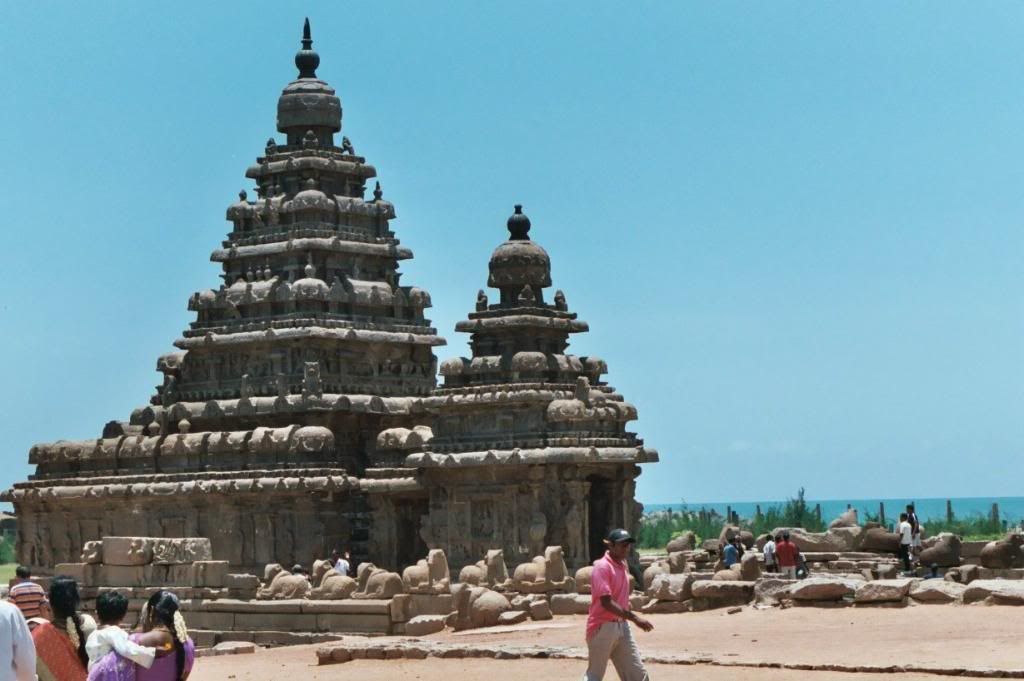
Shore Temples

Monolithic Rathas
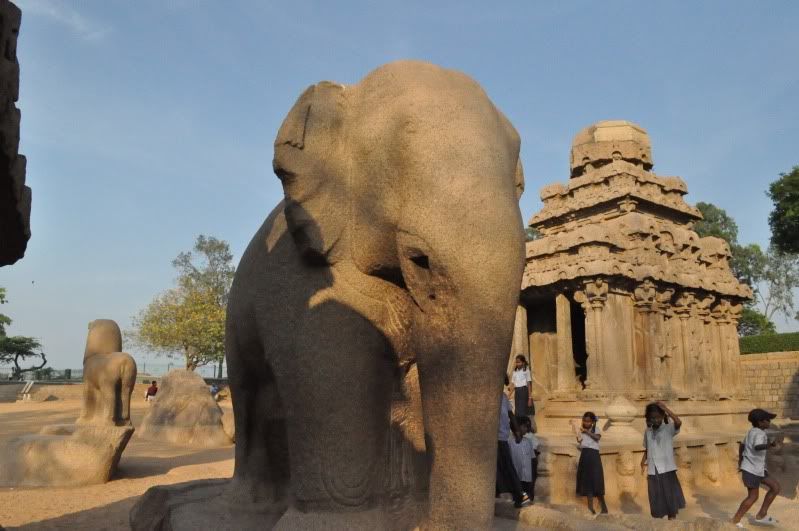
Stone Elephant
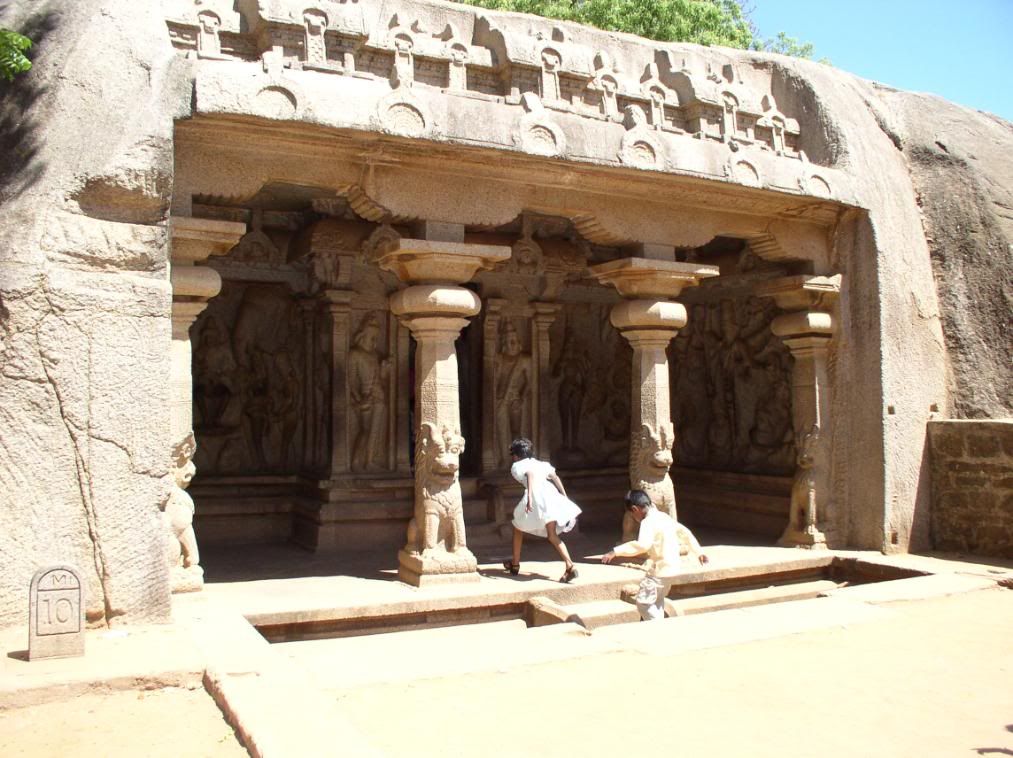
Cave Temple



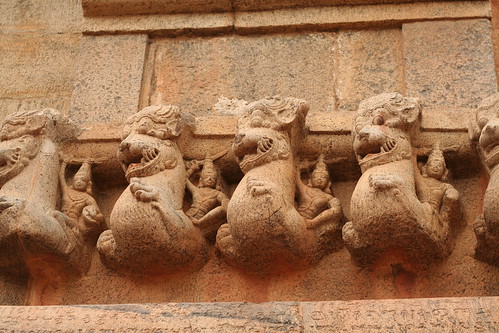
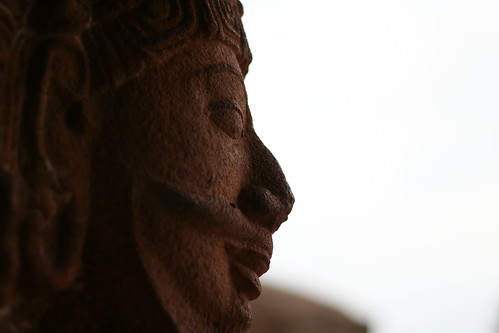
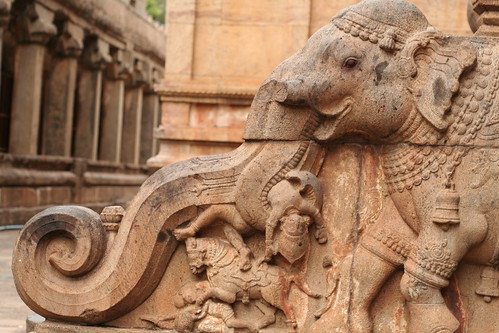

No comments:
Post a Comment